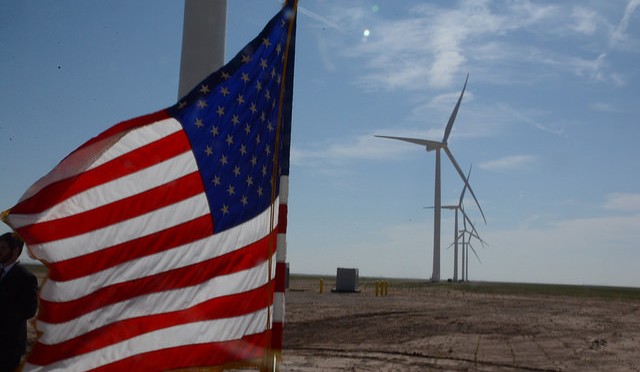American wind power expansion is poised to drive 248,000 jobs and $85 billion dollars in economic activity over the next four years, according to new analysis released today by Navigant Consulting. These and other economic benefits will result from the addition of 35,000 megawatts (MW) of new wind power capacity through 2020.
AWEA released an accompanying white paper, “Wind brings jobs and economic development to all 50 states,” to highlight the economic benefits wind already delivers to the U.S. economy today. For the first time ever the U.S. wind industry supports more than 100,000 jobs, with 102,500 workers in all 50 states.
“Growing wind energy revitalizes America’s rural areas and Rust Belt manufacturing centers,” said Tom Kiernan, CEO of AWEA. “With over 100,000 jobs today, the industry is just getting started. This new analysis projects the industry could drive nearly a quarter million jobs by 2020, with $85 billion in economic activity over the next four years alone.”
“American ingenuity and hard work have driven the cost of wind down by two-thirds since 2009, propelling wind to contribute 30 percent of power plant capacity added over the last five years. The policy certainty provided by the 2015 Production Tax Credit phase down has allowed the industry to make long-term investments in the American workforce and manufacturing to further bring costs down,” said Kiernan.
American wind industry jobs grew nearly 17 percent during 2016, and Navigant expects wind job growth to continue. By 2020, the consultant expects a total of 248,000 wind-related American jobs, including induced jobs. By that time there would be 33,000 Americans working in factories supplying the wind industry, 114,000 Americans building, operating and maintaining wind turbines, and an additional 102,000 workers in jobs supported by the industry.
The 102,500 wind industry jobs documented by AWEA only includes Americans working for wind companies or in their supply chain in 2016, and not jobs in the community supported by the local wind farm or factory. And unlike previous AWEA figures reporting the amount of private investment in new turbines each year, the Navigant study incorporates additional economic activity from operating and maintaining wind turbines, payments to landowners and taxes paid by the wind industry.
Rural areas that sorely need investment will be the largest beneficiaries of this growth, with 99 percent of wind projects located in rural areas today. Wind project development funds states and local communities through sales, income, and property taxes. Navigant calculates that the new wind activity will pay over $8 billion in taxes over the next four years, on top of the tax revenues from existing wind projects. These tax revenues help local communities fix roads, build schools, and improve emergency services.
Wind is now the largest source of renewable energy capacity in the U.S., with over 82,000 MW installed at the end of 2016; enough to power 24 million average American homes. Navigant forecasts the development of 35,000 MW of additional wind power capacity between 2017 and 2020, a more than 40 percent increase. And as of 2016, more than 80 percent of wind towers and up to 70 percent of blades and hubs are made in America, and 85 percent of turbine nacelles are assembled here.
According to Navigant, this growth is made possible, in part, by the multi-year extension of the wind energy Production Tax Credit (PTC) in 2015. Congress passed a five-year extension and phase-out of the PTC with strong bi-partisan support. The credit has already begun phasing out on an 80-60-40 percent schedule starting this year. By 2019 wind will be the only major source of energy without a dedicated federal incentive.



